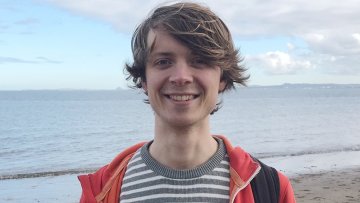In mathematics, as in footwear, order matters. Putting on your socks before your shoes produces a different result to putting on your shoes before your socks. This means that the two operations 'putting on socks' and 'putting on shoes' are noncommutative. Noncommutative structures are widespread in mathematics, appearing in subjects ranging from group theory to analysis and differential equations.
Example of a Highly Branching CD Space
Magnabosco, M
The Journal of Geometric Analysis
volume 32
issue 6
173
(29 Jun 2022)
Convergence of metric measure spaces satisfying the CD condition for negative values of the dimension parameter
Magnabosco, M
Rigoni, C
Sosa, G
Nonlinear Analysis
volume 237
113366
(Dec 2023)
A metric stability result for the very strict CD condition
Magnabosco, M
Nonlinear Analysis
volume 222
113018
(Sep 2022)
Almost-Riemannian manifolds do not satisfy the curvature-dimension condition
Magnabosco, M
Rossi, T
Calculus of Variations and Partial Differential Equations
volume 62
issue 4
123
(20 May 2023)
The Brunn–Minkowski inequality implies the CD condition in weighted Riemannian manifolds
Magnabosco, M
Portinale, L
Rossi, T
Nonlinear Analysis
volume 242
113502
(May 2024)
Sparse Probabilistic Synthesis of Quantum Operations
Koczor, B
(23 Feb 2024)
Mon, 20 May 2024
15:30
15:30
L3
Multiscale analysis of wave propagation in random media
Prof Josselin Garnier
(Centre de Mathematiques Appliquees, Ecole polytechnique, Institut Polytechnique de Paris)
Further Information
This is a joint seminar with OxPDE.
Abstract
In this talk we study wave propagation in random media using multiscale analysis.
We show that the wavefield can be described by a stochastic partial differential equation.
We can then address the following physical conjecture: for large propagation distances, the wavefield has Gaussian statistics, mean zero, and second-order moments determined by radiative transfer theory.
The results for the first two moments can be proved under general circumstances.
The Gaussian conjecture for the statistical distribution of the wavefield can be proved in some propagation regimes, but it turns out to be wrong in other regimes.
Stable Liftings of Polynomial Traces on Tetrahedra
Parker, C
Süli, E
(24 Feb 2024)


